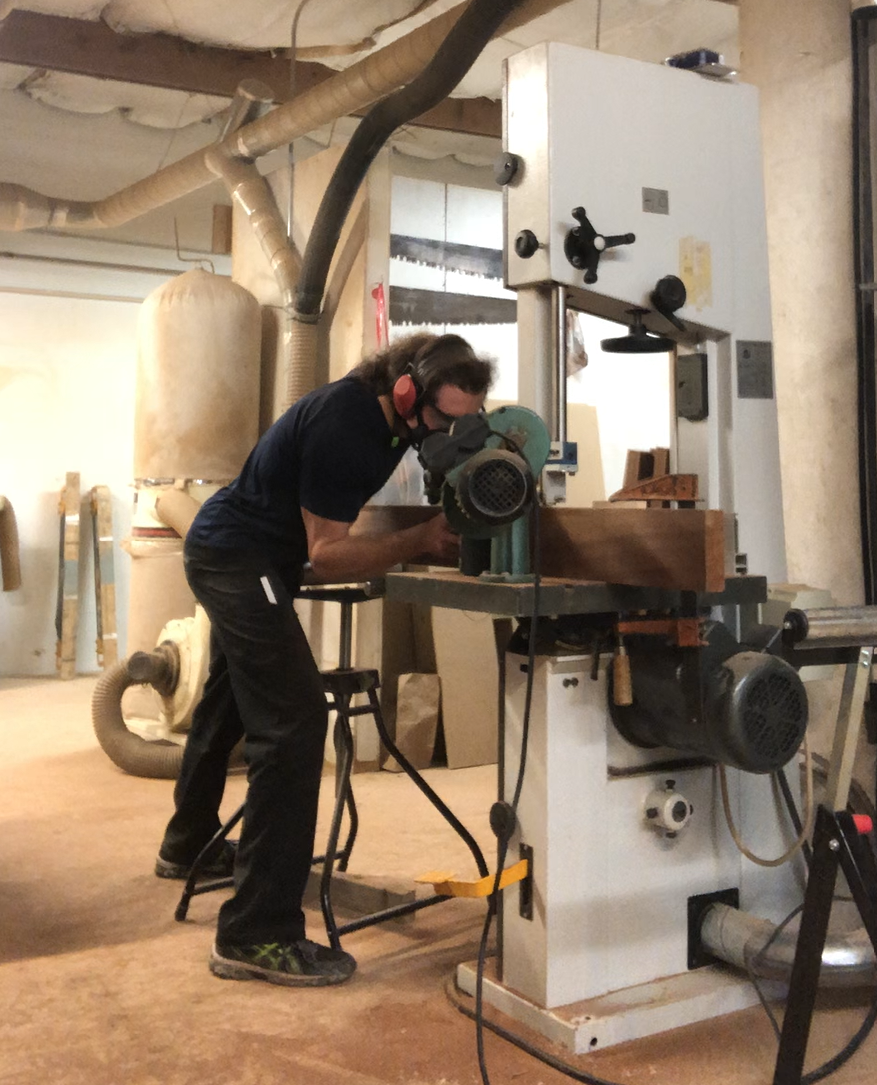Sapele Bedframe
This bedframe was my first commission after starting Christoph Fine Woodworking, and it remains one of my favorites. The shaker style, with its minimal ornamentation, lets the beauty of the wood and quality of the joinery stand out. Like all my large furniture, this piece can be dissembled for transport, in this case by removing the subtly angled wooden pins that pull the double tenons of the rails tight against the legs. More complex joinery is hidden in the headboard, which is attached to the legs by shouldered sliding dovetails (this is similar to the breadboard ends featured on many breadboards and tables). I chose this method of attachment to ensure that wood movement perpendicular to the grain in the large panel against the unmoving vertical grain of the legs would not cause cracking over time.
Each leg tapers into a circle at the base, creating a more elegant look but also removing corners that one might stub their toe against. Similarly, the tops of the rails are crowned such that they make comfortable steps. This type of consideration is central to my design philosophy, which prioritizes aesthetics but also the day-to-day user experience.





